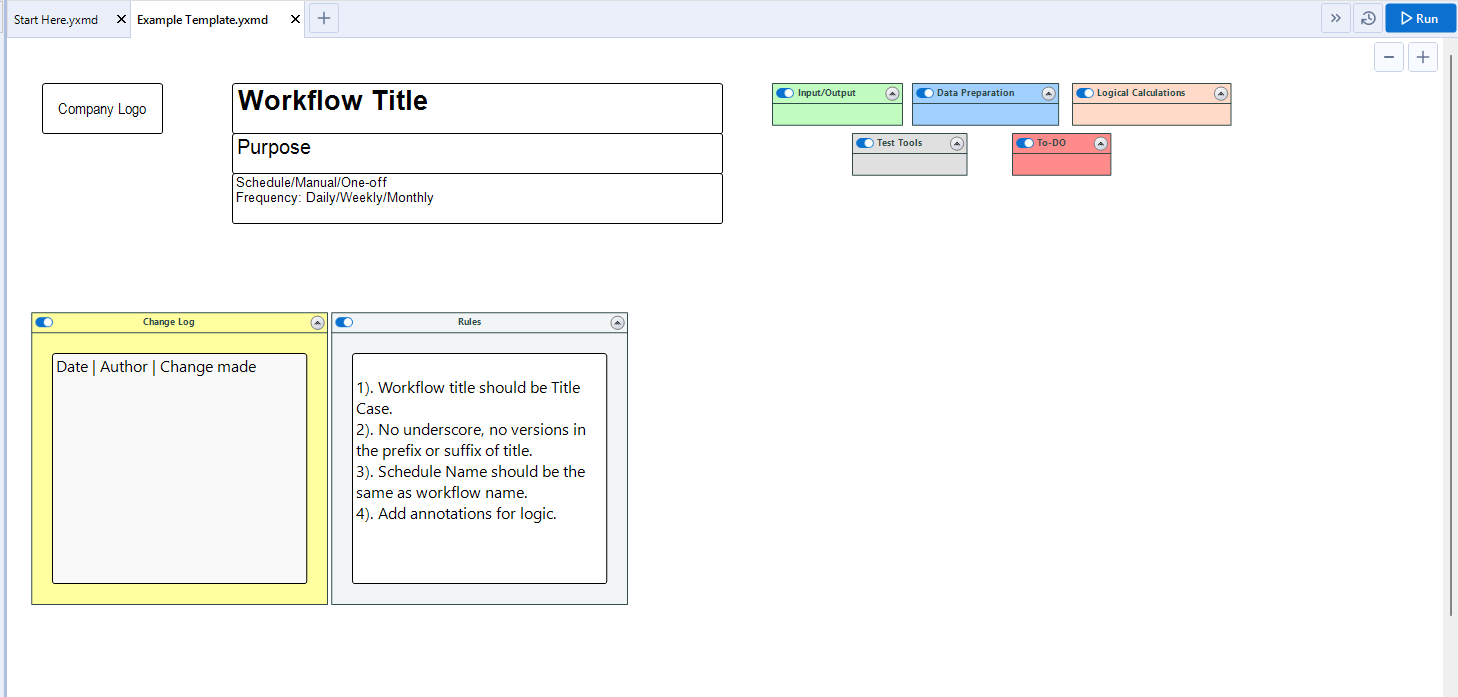Optimize Your Alteryx Experience: Harnessing the Power of Workflow Templates

Welcome to the edition 'Optimize Your Alteryx Experience', crafted for professionals like you who rely on Alteryx in their day-to-day work. Throughout this series, I'll serve as your trusted guide, unveiling tips and tricks tailored to enhance your proficiency with Alteryx.
In today's tutorial, we're delving into a fundamental aspect of Alteryx workflow management: Leveraging Templates.
So, what exactly is a template, and why is it so crucial?
Simply put, a template is a standardized skeleton that maintains uniformity across all your workflows. Think of them as your trusty blueprint, guiding you through the maze of data processing with ease. A well-crafted template encompasses essential components such as the workflow title, purpose, schedule, frequency, change log, and key/legend.
Why invest time in creating templates?
Let's face it - as Alteryx users, we're often caught up in the thrill of building the next groundbreaking workflow. Investing a little effort upfront in crafting robust templates pays dividends in the long run. Picture this: someone else is tasked with deciphering your masterpiece of a workflow down the line. By adhering to a standardized template, you're ensuring that your workflow is not only comprehensible but also easy to update and troubleshoot. Documenting our workflows is akin to laying down breadcrumbs for our future selves and others who may inherit our projects.
What does a template look like?
Here is an example of a template. You can customize it as per your preferences and company guidelines.

💡Lightening TIP: Work SMART, not HARD 💡
Save yourself the hassle of setting up your Alteryx template every time you start a new workflow. You can do so by ensuring your Alteryx template opens automatically every time you launch the application. Follow these simple steps to set up your Alteryx template as default:
1). Right-click on Start Here and click Open Containing Folder.

2). This will open the location where you need to save your template. Whatever workflow you save in this location opens by default when you open Alteryx.

Note: If you cannot see Start Here on opening Alteryx, Click on Options, go to User Settings, and Edit User Settings. Check 'Show Start Here at startup'.

Congratulations! 🎉 You've laid the foundation for building meticulously documented and consistent workflows. By harnessing the power of templates, you can streamline workflow management, enhance collaboration, and future-proof your projects. So, before you embark on your next Alteryx adventure, remember to start with a solid template in hand. Your future self will thank you for it!
Stay tuned for more invaluable tips and tricks in the "Optimize Your Alteryx Experience" series. Until next time, happy analyzing! 🤓

